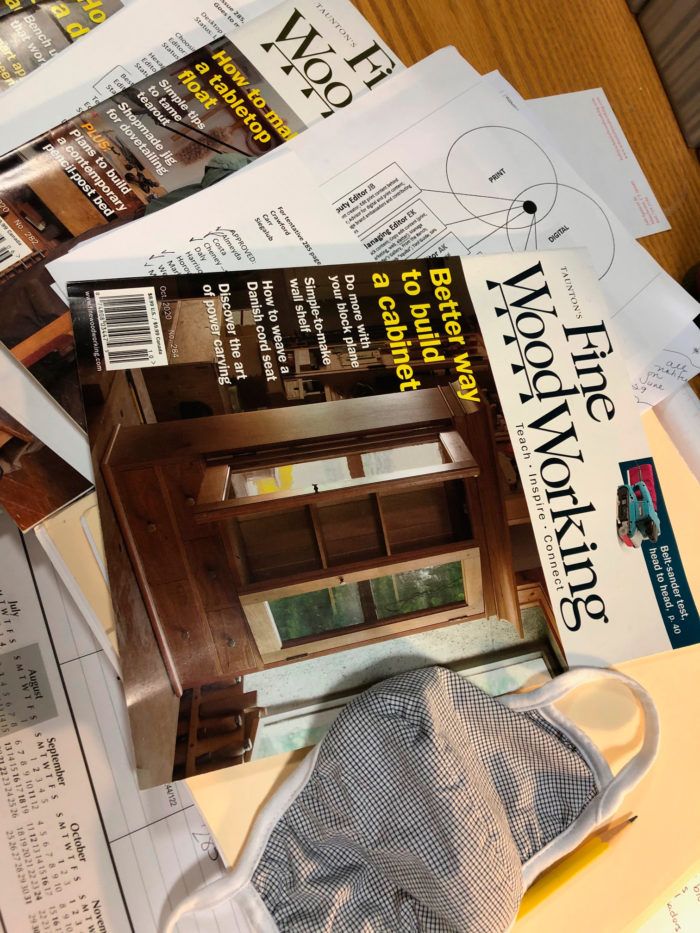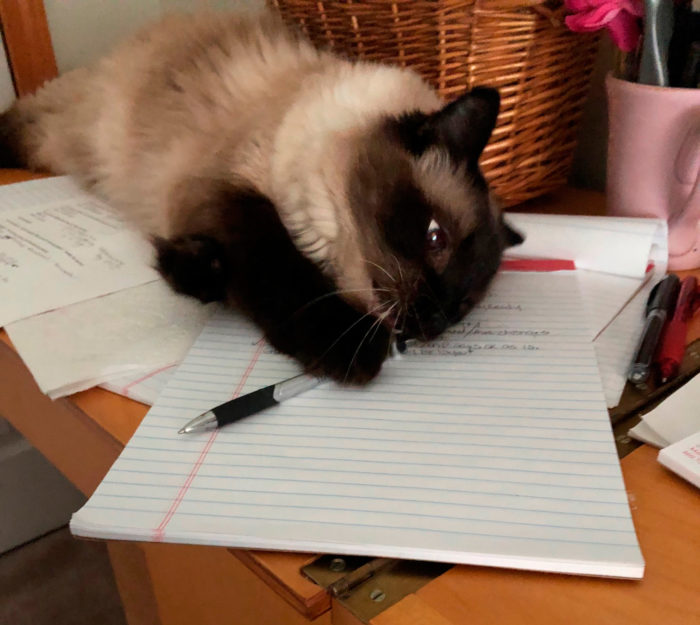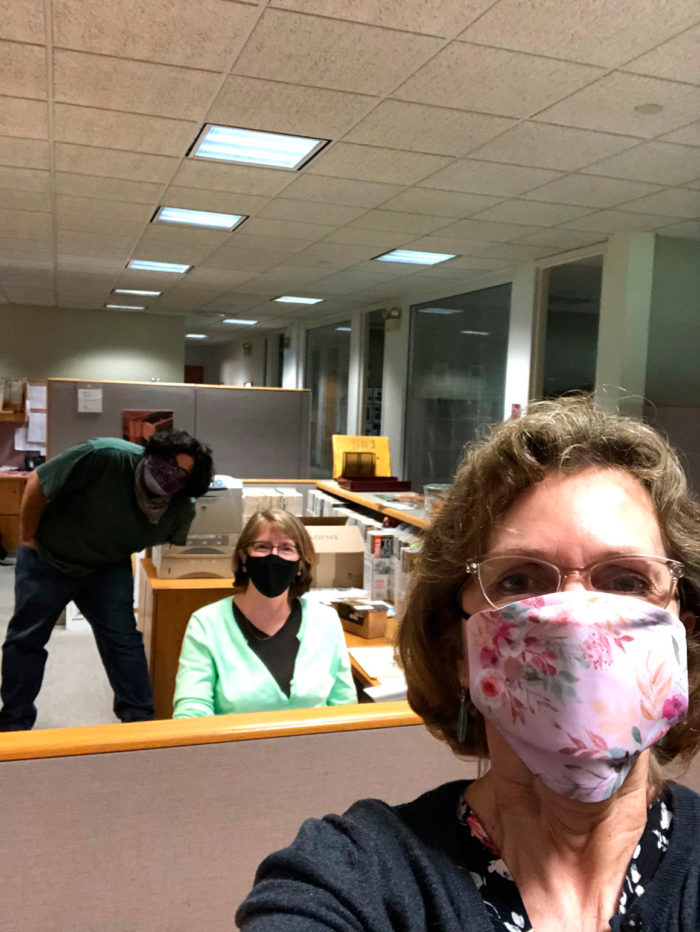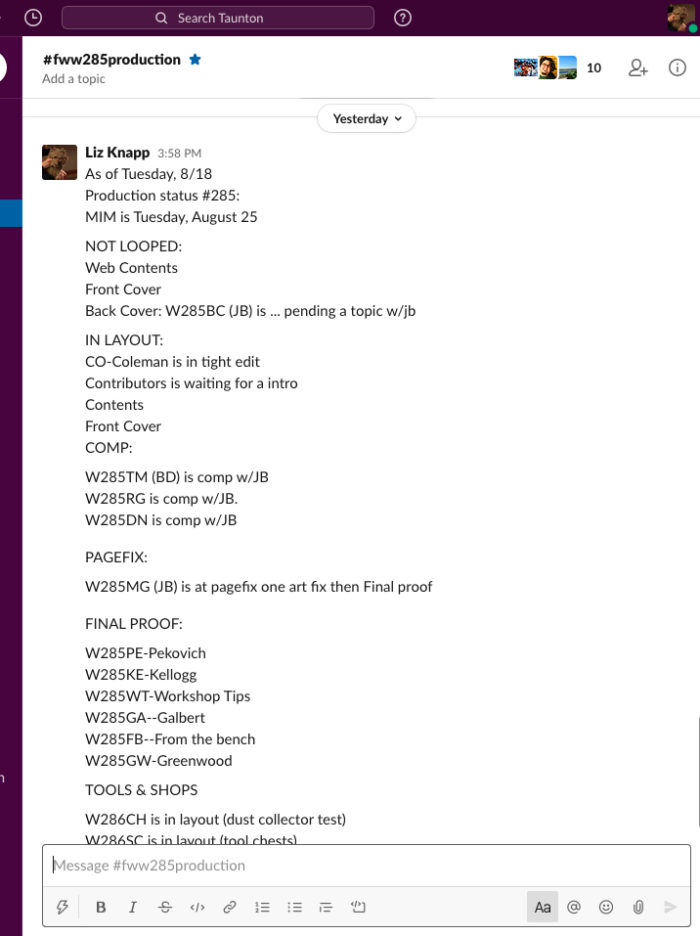Production in the time of Covid
Making a magazine from home, with all the pitfalls, cat hair, and communication issues you can possibly imagine.
Our readers like to let us know when they spy a mistake in the magazine. Because I came to Fine Woodworking from the world of newspapers, where mistakes are a daily occurrence, I used to be surprised when we’d get an email or call about the odd typo one of our eagle-eyed readers had found. But after 15 years, I’ve come to view these emails with a kind of rueful affection.
FWW readers love the magazine. They scrutinize every word. And they like us to know they are paying attention. That’s one of the many things we love about them.
Today I was talking to my partner in crime, Betsy Engel, the administrative guru of the magazine, about an email she had gotten where a vigilant reader had spied a mistake. And after I shook my head and acknowledged that yes, they were right (they usually are!), I wondered out loud: “Do you think they have any idea what a miracle it is that we have even produced a magazine during this pandemic?”
Actually, we’ve produced three (and one Tool Guide). And it has been, to put it mildly, an adventure.
We’re all working from home. We have various setups for our home offices—some cobbled together in a hurry when management told us in mid March to pack up our stuff and start working from home, some in the corner of the woodshop, some in the middle of the bedroom or kitchen. Covid-19 hit Connecticut early, and it hit us hard. Thankfully, our management is committed to keeping us all well and safe.

But this order to vacate the office came about three weeks before issue 283 was scheduled to go to press. And there were definite technological challenges involved. Connecting remotely to the server, working with giant image files and giant layout files, took huge amounts of time. Simply downloading a photo, in those first weeks, could take as long as 40 minutes. I still have nightmares about the first time I tried to move an article folder from one place to another on the server and it told me “estimated time … four hours.”
Because we couldn’t manage at this glacial pace, we moved production from our office servers to the Cloud. That was looking good, but it was not without peril. One day, about three days before our print deadline, ALL the photos in the issue just disappeared. GONE. And I spent an entire night working with our photo expert Bill Godfrey trying to find what had been lost and put it back where it belonged.
Over these past few months, I’m pretty sure we’ve produced more than a few gray hairs along with a few magazines. We’ve worked out the technical bugs that initially plagued our production. But even so, communication via Zoom and Slack and email is not ideal. We miss each other, and the back-and-forth we were used to. We miss how easy it was to get answers to the simple and complex questions we all deal with every day.

I’m writing this the week before issue 285 goes to the printer. Here is a brief rundown of my week so far.
Monday, 8 a.m. Log onto the computer. See that editor Mike Pekovich has left three Slack messages informing me that he has changed the map. (The “map” is the document that tells me how many pages are in an issue, how many pages each article gets, where they are located, etc.)
9 a.m. I tell Barry Dima that we are cutting his article on adzes from six pages to four. I don’t hear Barry scream, but I imagine it.
9:30 Barry and John cut the article to four pages.
11 a.m.: A new Slack message informs me that one of the articles in the issue is being held, and another article being created to fill that slot. We regroup. I inform the various editors of the changes. I don’t hear the screams, but I imagine them.
Tuesday: The map changes again. Some of the articles that were held the day before are back in the issue. OK. I continue editing. I continue checking each page for mistakes (I know you all are looking for them).
Thursday: The ad department gives back two pages, requesting that we fill them. Barry’s article goes from four pages back up to six. I don’t hear the scream, but I imagine it.
Step by step, the issue takes shape. Editing is done, changes are made. Somehow miraculously, it comes together. Nobody loses their mind. I don’t hear any screams. And we’re just about ready to put another issue to bed.
I’m sure this type of scenario is not unique. I know it’s being played out in offices around the country. Everybody has challenges, and we are lucky to be working at a job we love. But I can’t help thinking, as I go over this new issue page after page … which reader is going to write in next month and tell us he or she found a mistake? And what will I tell them? The cat DID walk across my keyboard a few times. Maybe I can blame him …

























Comments
Through all of this the magazine is as fantastic as ever.
Great work.
And two bee honist I havint even knoticed any speling mistaykes. or utheR typoz £¿
Haha!
We very much appreciate all the extraordinary effort that has gone into giving us back a little piece of normalcy. A lot of us have suddenly been thrown into odd situations and appreciate that it isn't easy, even as you make it look easy.
Log in or create an account to post a comment.
Sign up Log in